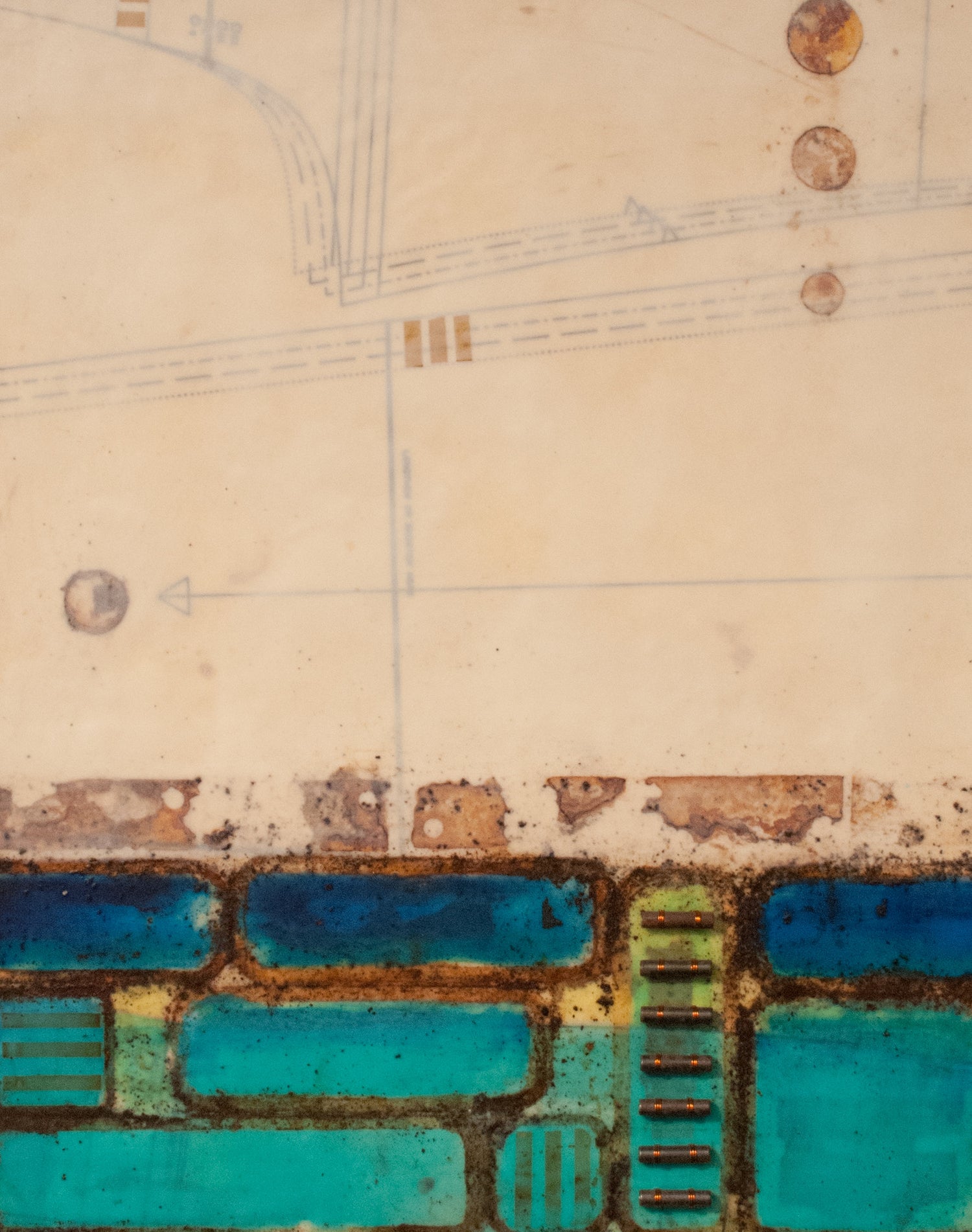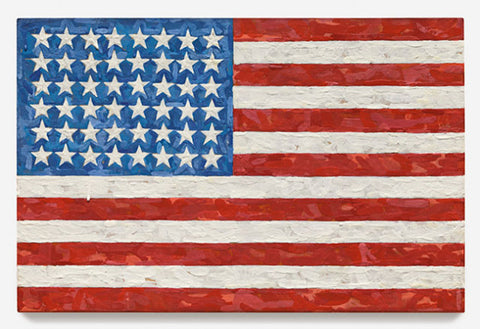
A Sticky Question: So What the Heck IS Encaustic Anyway?
So What the Heck Is Encaustic Anyway?
Encaustic – if you have spent much time around than you have probably heard of it. You might even know a little bit about it, but if you’re like me, the specifics of this particular medium are still somewhat mysterious.
Well – although I was a little familiar with encaustic already, after diving into the depths of the internet to learn more about this illusive medium, I have emerged with an even greater respect for our artists who chose to work in encaustic.

Borderline, by Art Elements Encaustic Painter Pam Nichols, 20x16
Encaustic, as you may already know, involves working with wax, more specifically bee’s wax. It requires that you heat up the wax and careful spread thing layers across you a wood surface. It’s a very labor intensive, intense and physical way to work.
The wax must be applied in thin, carefully monitored layers in order for the finished work to be visible.
The encaustic artist then either layers collage elements between the layers of wax, or can work pigments, with colored wax or mixed oil paint into the wax itself.
The result is pretty amazing. Encaustic artists are able to create two-dimensional works with an incredible sense of depth. It has been described as a spontaneous method, in the sense that once the wax hardens you can’t go back and make changes. You have one shot, then you’re done. You only have one opportunity to work with the material. This doesn’t lend itself to a lot of detail planning or rework, so often times, encaustic works have an expressive and yes, spontaneous feel to them. The other neat thing about encaustic is that once the wax has been applied to the surface of the work, its surface can be textured and worked over for a variety of different effects.
Stacked Up, by Art Elements Encaustic Painter Virginia Parks, 10x10 and on view at Pulp and Circumstance
One of the most famous artists to work with encaustic was the American Pop artist Jasper Johns. Is American flags (one of which is on view at MOMA) were made by using many thickly spread layers of encaustic bees wax. The result is almost impossible to capture in a photograph, but the affect in person is almost overwhelming.

Flag, Jasper Johns, 1954 3' 6" x 5' 1", encaustic
However, far from a modern method, encaustic was originally used as long ago as the first century BCE! Greek warriors, who covered their ships with melted wax to seal them and make them water tight, found that by working pigments into the wax they could cover their ships in threatening war paint.

One of the Fayum Funerary Portraits, from 1st Century AD Greece. Perhaps one of the most famous examples of ancient encaustic painting
Encaustic is also extremely durable the wax essentially protects any paint or decoration beneath in a thick shield, so it was a favored method in the early Renaissance.
Here at art elements we have several artists who love to work with encaustic including Pam Nichols, Virginia Parks and others. We have to admit we are a little bit although it might seem a bit opaque at first, in love with this medium.

Warrior, Pam Nichols, 8x8
Leave a comment